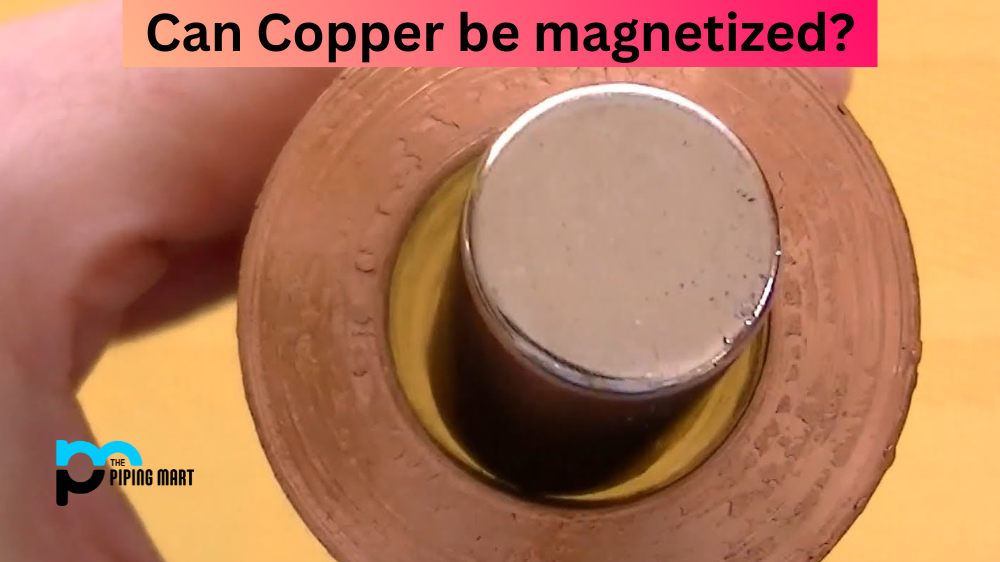Copper is a metal that has many uses in everyday life, but one thing you may be wondering is if Copper can be magnetized. The answer is yes! Although Copper is not naturally magnetic, it can become magnetized when exposed to an external magnetic field, and it will retain its magnetism even when the external field is removed.
Let’s dive deeper into the science behind this phenomenon and look at how exactly Copper becomes magnetized.
How Copper Becomes Magnetized
When Copper gains its magnetization, it does so through a process called induced magnetization. This occurs when the Copper comes in contact with an external magnetic field, such as from a strong permanent magnet or an electromagnet. When this happens, all of the electrons within the Copper align in the same direction due to the influence of this external field and form tiny magnets themselves. Then, when you remove the external field, these magnets remain aligned like tiny compasses and continue to act on each other and create their own internal magnetic fields. These individual magnets are what give rise to the overall magnetization of the entire piece of Copper
The strength of this induced magnetism can vary depending on factors such as how strong the external magnetic field was applied, as well as how long it was applied. It also depends on which type of material was used; some materials are easier to induce by an external field than others. However, once induced, most materials will remain magnetically charged until their temperature rises above what’s known as their Curie point—the temperature at which they lose their ferromagnetic properties (ferromagnetic materials are those that can become and stay magnetized). For Copper, its Curie point is around 1043°F (565°C).
Conclusion:
Although Copper is not naturally magnetic, it can become temporarily magnetized if exposed to an external magnetic field such as from a strong permanent or electromagnet. After exposure to this kind of force, all of the electrons within the Copper will align in one direction and form tiny magnets that cause overall magnetization in the piece of Copper itself—a process known as induced magnetism. However, this induced charge will eventually dissipate due to rising temperatures above a certain point—known as its Curie point—meaning that any magnetic properties gained by exposing it to an external source won’t last forever! Knowing about these properties can help website owners get better insights into how different metals interact with one another and create better products for consumers down the line!

Abhishek is a seasoned blogger and industry expert, sharing his insights and knowledge on various topics. With his research, Abhishek offers valuable insights and tips for professionals and enthusiasts. Follow him for expert advice on the latest trends and developments in the metal industry.




